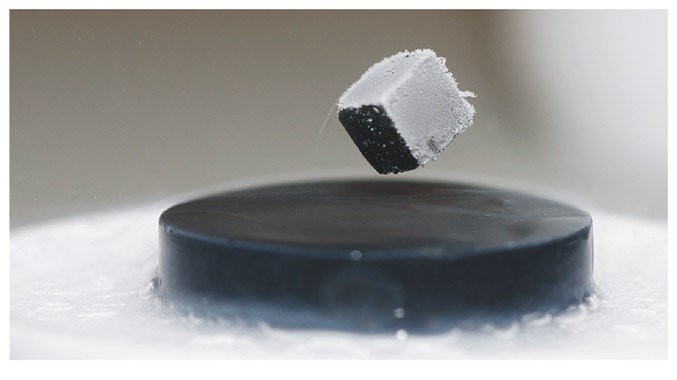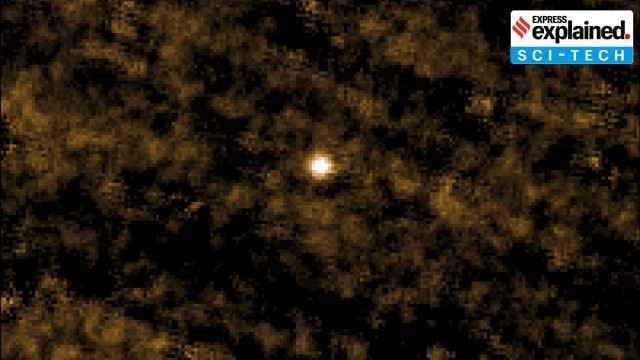Description

Disclaimer: Copyright infringement not intended.
Context
On April 8, 1911, superconductivity was discovered by Dutch physicist Heike Kamerlingh Onnes.
Details
- Superconductivity is a state in which a material exhibits zero electrical resistance and the expulsion of magnetic flux when cooled below a critical temperature.
- Heike Kamerlingh Onnes discovered superconductivity in 1911 in mercury.
Types of Superconductors
- Type I Superconductors:
- Examples: Mercury, lead, tin.
- Properties: They have a single critical temperature and are typically pure metals with strong electron-phonon coupling.
- Behavior: They undergo a sudden transition from normal to superconducting state and exhibit perfect diamagnetism.
- Type II Superconductors:
- Examples: Niobium, yttrium barium copper oxide (YBCO).
- Properties: They have a complex phase diagram with multiple critical temperatures and exhibit both type I and type II behavior.
- Behavior: They can support magnetic flux penetration in the form of vortices and exhibit mixed state behavior.
Basic Principles
- Cooper Pairs: Superconductivity is explained by the formation of Cooper pairs, where electrons in the material form pairs due to interactions with lattice vibrations (phonons).
- Zero Resistance: Superconductors offer zero electrical resistance, allowing for lossless transmission of electrical currents.
- Critical temperature (TcTc): The temperature below which a material becomes superconducting.
- Critical magnetic field (HcHc): The maximum magnetic field a superconductor can withstand while maintaining its superconducting state.
- Critical Current Density (Jc): The maximum current density a superconductor can carry before it transitions to a resistive state.

Meissner Effect and Flux Quantization
- Meissner Effect: The expulsion of magnetic field lines from the interior of a superconductor when it transitions to the superconducting state.
- Flux Quantization: The quantized magnetic flux that penetrates a superconductor in the form of vortices. This flux is quantized in units of the magnetic flux quantum Φ0=h2eΦ0=2eh, where hh is Planck's constant and ee is the elementary charge.
BCS Theory of Superconductivity
- Bardeen-Cooper-Schrieffer (BCS) Theory: Proposed in 1957 by John Bardeen, Leon Cooper, and Robert Schrieffer.
- BCS theory explains superconductivity in terms of the formation of Cooper pairs, which are bound pairs of electrons due to electron-phonon interactions.
- At low temperatures, electrons near the Fermi surface form pairs with opposite momentum and spin, leading to a macroscopic quantum state with zero resistance.
Applications of Superconductivity
- Magnetic Resonance Imaging (MRI): Superconducting magnets are used to generate strong magnetic fields for medical imaging.
- Power Transmission: Superconducting cables can carry electricity with minimal loss, leading to more efficient power transmission over long distances.
- Quantum Computing: Some quantum computing architectures utilize superconducting qubits due to their long coherence times and ease of manipulation.
- Magnetic Levitation (Maglev): Superconductors are used in magnetic levitation trains for frictionless transportation.
- Particle Accelerators: Superconducting materials are used in particle accelerators like the Large Hadron Collider (LHC) to generate powerful magnetic fields for accelerating and steering charged particles.
- Superconducting Quantum Interference Devices (SQUIDs): Sensitive magnetic field detectors used in various scientific and medical applications, including biomagnetic imaging and materials testing.
High-Temperature Superconductors (HTS)
- High-temperature superconductors were discovered in the late 1980s, initially in copper-based compounds like YBCO.
- These materials exhibit superconductivity at significantly higher temperatures compared to traditional superconductors.
- HTS materials have potential applications in power transmission, magnetic levitation, and medical imaging due to their higher critical temperatures.
Challenges
- High Temperature Superconductors: Efforts are ongoing to discover or engineer materials that exhibit superconductivity at higher temperatures, which would make practical applications more feasible.
- Fabrication Techniques: Developing cost-effective fabrication techniques for superconducting materials and devices is crucial for widespread adoption.
- Understanding Unconventional Superconductivity: Many superconducting materials exhibit unconventional behavior not fully explained by BCS theory, and further research is needed to understand and harness these properties.
High-Temperature Superconductors (HTS)
- Discovery: In 1986, IBM researchers discovered high-temperature superconductivity in copper-based compounds, sparking immense interest.
- Operate at temperatures above the boiling point of liquid nitrogen, making them more practical for applications.
- Examples include Yttrium barium copper oxide (YBCO) and Bismuth strontium calcium copper oxide (BSCCO).
Ongoing Research
- Iron-Based Superconductors: A class of superconductors discovered in 2008, offering different properties and potential applications compared to conventional superconductors.
- Topological Superconductors: These exotic materials, which may host Majorana fermions, are being investigated for applications in quantum computing and fault-tolerant quantum information processing.

Conclusion
- Superconductivity has revolutionized various fields, from medicine to transportation and energy.
- Ongoing research aims to overcome existing challenges and unlock the full potential of superconducting materials for future technologies.
Sources:
Hindu
Energy.gov
|
PRACTICE QUESTION
Q. Superconductivity remains a vibrant area of research with profound implications for various fields, from fundamental physics to practical applications in technology and medicine. Comment. (150 Words)
|











